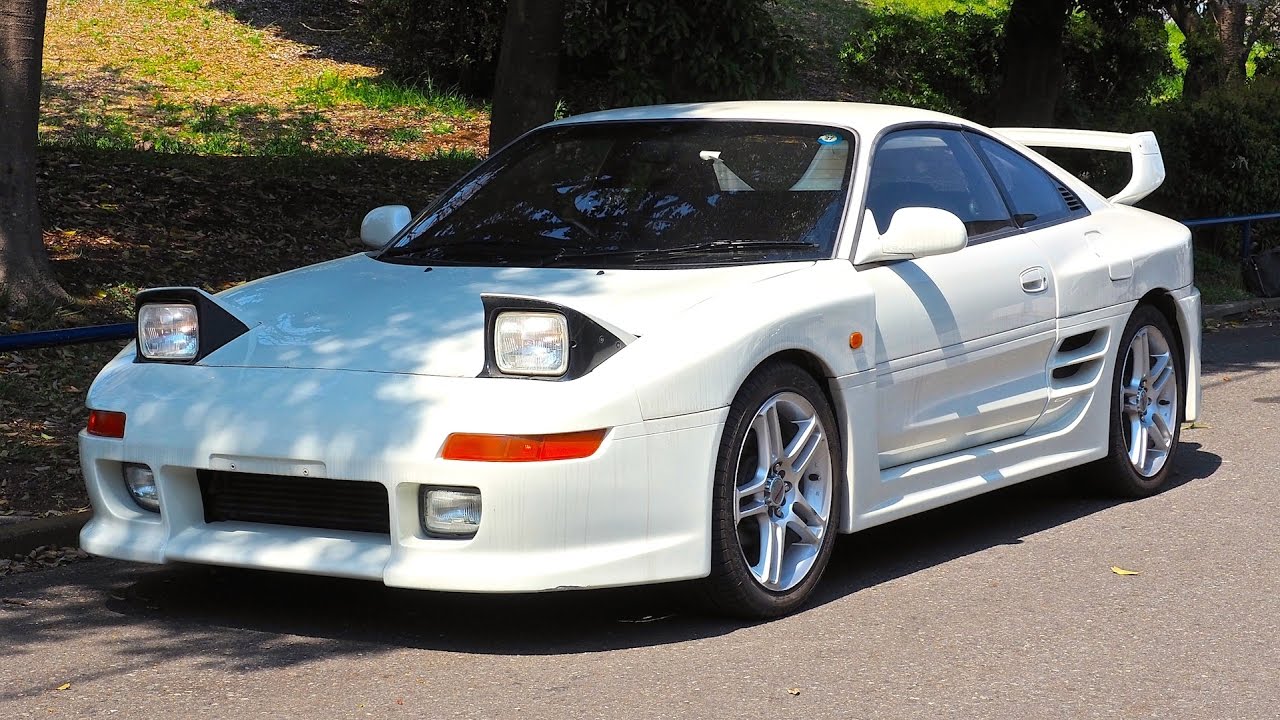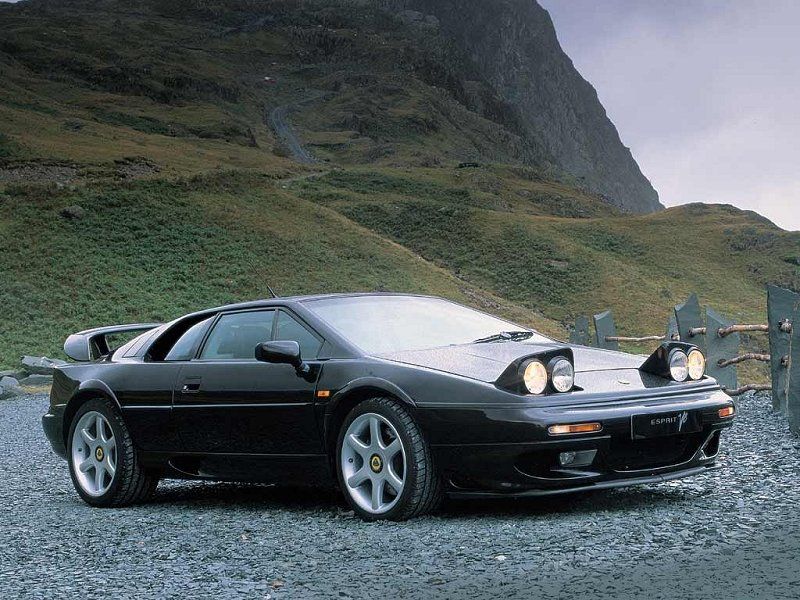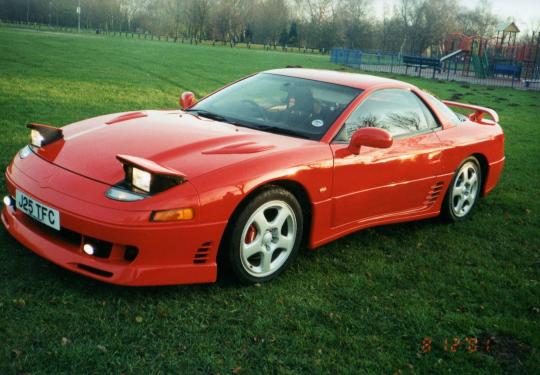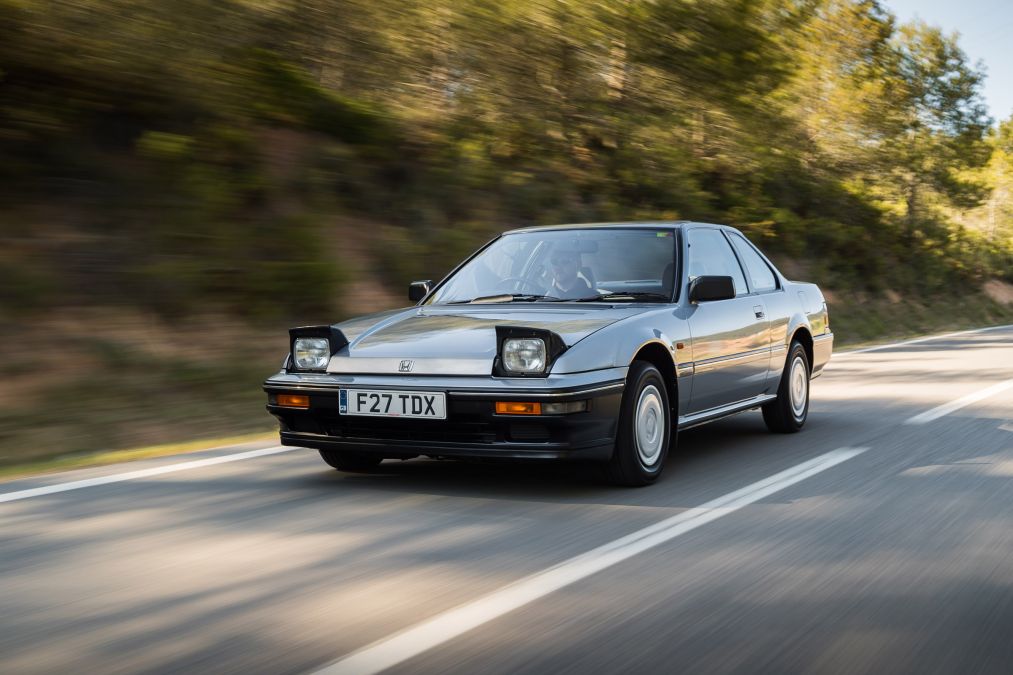Reviving These Epic Cars Could Bring Pop-Up Headlights Back
The obsession with pop-up headlights is a very real one. It seems as of late they’ve been, wait for it, popping back up in discussions on Twitter and blogs everywhere. Possibly because as ‘80s and ‘90s cars are gaining popularity for their nostalgia, so are their seemingly trademarked design elements.
Earlier this summer, I tweeted everyone’s favorite car reviewing YouTuber Doug DeMuro (and the only person who could ever trademark the word “THIS!”) after watching his Lamborghini Diablo VT Roadster video, simply waxing nostalgia over the engineering feats of wonder that were the headlights on the front of the poster-worthy example he had just driven. Doug replied to my inquiry as to why we can’t have pop-up lights on modern cars with the logical answer: They’re likely against modern day pedestrian safety guidelines.
Fair enough. A little more on that later.
For now, let’s take a trip down memory lane and look at a few historically significant vehicles that featured the most entertaining bit of car design to hit the ‘80s and ‘90s. And let’s say, if any of these cars were to make a comeback, including a modern miracle that would be regulation-friendly pop-up lights, I’d be so down for it.
Imagine one of these little guys with 493 hp…
MR2/ MR2 2000GT
Show me one car enthusiast who would kick a MR2 Turbo out of their garage and I will show you a liar.
The MR2 was very much a do-it-all lightweight mid-engine marvel that was produced for more than 23 years. That includes its final iteration as the MR2 Spyder, but let’s just skip that generation.
Instead, let’s focus on the SW20 generation, produced from 1989-1999. This generation was the MR2 of greatness. The second gen MR2 included the turbo variant with 218 hp that was so quick, and light, that even today people talk about how recklessly driving one would land you quickly in a coffin.
In 1998 the SW20 MR2 got a factory-sanctioned tune and body kit, like the one shown in the photo above, to become the TRD2000GT. Toyota Racing Development built just 35 cars with wide body kits to replicate the GT-C Japanese series winning race car. The conversion to the 2000GT wasn’t just fiberglass body parts and a giant spoiler, it featured extensive suspension and engine upgrades. It’s rumored that a number of these vehicles left the factory making just shy of 500 horsepower. For a vehicle weighing less than 2500 lb. For the math nerds out there, that’s a power-to-weight ratio that’s better than a Ferrari 458 Speciale.
Toyota had the cojones to revive the Supra for 2020, let’s make a play for an MR2 2000GT revival. A light, powerful sports car with aggressive styling and tuned out of the box would sell like hot cakes. Want to hit a home run? Bring back those pop-up headlights.
This British legend with quirky headlights to match. Photo via British GQ.
Jaguar XJ220
The XJ220 was just about everyone’s childhood dream car come to life. It’s gargantuan, impractical, not really as fast as one may think, but damn it looks good. It’s all a bit alien. Right down to the headlights.
Not to continue to plug his videos, but DeMuro reviewed one of these as well and blew a whole lot of minds when he exposed this British beauty’s little secret: The headlights didn’t really “pop up” or turn over, but more so popped…down? The covers on the headlights actually dropped down to expose the headlamp assembly. Whether or not you consider that a contender for pop up headlight revival, there’s no denying the historical significance of the car. Just 275 examples were made and the factory that produced these automobiles was actually opened by Diana, Princess of Wales, who also unveiled the first production XJ220 in 1991. Imagine a brand new version with the same design vision, but sleeker body dimensions and the purr of the supercharged V8 that makes the F-Type SVR such a beautiful machine to listen to, and drive. It could be a carbon fiber marvel like the McLaren Senna, just not as harsh on the eyes.
The Esprit was a die-hard for pop-up headlights. Every generation sported a pair, even the example that James Bond himself drove into a lake in “The Spy Who Loved Me.”
Lotus Esprit
Lotus is due for a revival.
The current lineup … well, there’s not much of one. The Evora is the sole offering from the legendary British automaker that’s available in the United States. The good news is that the Evora GT, the 416 hp compact race car for the road, is generally praised by the automotive journalism community. You know what would really get our gears turning though?
The revival of the Lotus Esprit. Lotus’s flagship vehicle for 28 whopping years saw engine variants from a turbo inline-four to a twin-turbo V8, and several major facelifts. One constant remained since its inception: Its pop-up headlights. Every variation featured them. The Esprit was the definition of a British grand tourer for decades. If it weren’t for the widely-reported mechanical and electrical issues, Lotus would have garnered bigger production and world-wide sales. Over its 28-year run, less than 11,000 Esprits were produced. So why not revive the brand, and those beautifully integrated pop-up headlights? For fun, take the platform that Lotus is developing for the Evija electric supercar and make the fabled spirit of Lotus into a hybrid masterpiece.
Whether you knew it at the 3000GT or the Dodge Stealth, it was all swoon-worthy.
3000GT VR-4
It’s no secret that no one cares one iota about Mitsubishi anymore. Unless you’re in the market for a econo-box with great financing options on a shoestring budget, you aren’t even considering walking onto the lot of a Mistu dealership, unless you’re lost on the way to the Mazda showroom.
With the Eclipse name being bastardized and relegated to the back of a cross over, it leaves only one name left in the street cred arsenal to bring back to life to restore the Mitsubishi performance brand: 3000GT.
The 3000GT was the sleeper Japanese sports car of the ‘90s. Everyone was praising the Toyota Supra and Nissan GTR while Mitsubishi quietly developed one of the most technologically advanced sports cars of the decade. From twin-turbochargers and all-wheel-drive, to four-wheel steering and adaptive suspension, Mitsubishi rounded out the tech packaging with active aerodynamics in the form of adjustable front and rear spoilers. The 3000GT (known in Japan as the GTO) even offered a VR-4 Spyder for the 1995 and 1996 model year, which featured a retractable hardtop, the first offered since the 1959 Ford Skyliner.
The 3000GT VR-4 and its almost undersized pop-up headlights are just the thing to put the Mitsubishi brand back on the map. Since the company hasn’t ventured into the world of three-row people hauling SUVs, why not differentiate offerings with a knock-your-socks-off two-seater. Hell, clean 1991 twin-turbo models are still fetching $20,000-plus on the used car market.
The Prelude was surprisingly quick, slick and popular in its day. Photo via EVO Australia.
Honda Prelude
Honda has long produced sports cars for the record books. After all, it birthed the likes of the NSX, which sported some pop-ups of its own, and the S2000, a street racing legend. But, suffice to say, it all started with the Honda Prelude.
The Prelude was produced for 23 years and was often on the cutting-edge of automotive advancement along the way. In its second generation, the Prelude received a major facelift from its late-70s designed predecessor. That facelift included pop-up lights, which Honda itself claimed helped to reduce drag at the front clip.
It was the third generation that put the Prelude on the map. Produced for four years beginning in 1987, the third gen Prelude boasted the world’s first mechanical four-wheel steering in a production passenger car and a 0.34 drag coefficient, which for the 1980s was groundbreaking. It was during this generation that the Prelude gained worldwide recognition. Road & Track threw a four-wheel-steering Prelude through a slalom with competitors from Porsche, Ferrari and Corvette, and the ‘Lude did it fastest.
Today, the Honda Accord, which Honda originally based the Prelude off of, is a handsome people-pleaser of a family sedan. Honda’s Civic Type R is the brand’s current go-to sports car. But it’s boy-racer styling isn’t exactly groundbreaking nor grown up. Bring back the Prelude with its legendary prowess for technological advancements, slap some adaptive pop-ups on it and let’s get this done. Especially since the Prelude’s reputation could use a facelift of its own.
Whereas today’s vehicle safety regulations in the United States don’t necessarily ban the development of pop up headlights, they’ve made it exceedingly difficult. National Highway Safety Administration standards go so far as requiring that any malfunctions with concealing a headlight must be able to be remedied without the use of tools. Therefore, if your pop-up light motor bites the dust, or an electrical harness comes loose, there must be a way to manually operate the headlight into open or closed positions. I’m not sure you’re going to convince anyone to get out of their car and shove a fingernail into their headlight assembly to open it up. In Europe, a continent that gives much more consideration to both sports cars and cars in general, as well as pedestrian safety, regulations are even stricter.
Oh well, a boy, and a generation, can dream.





